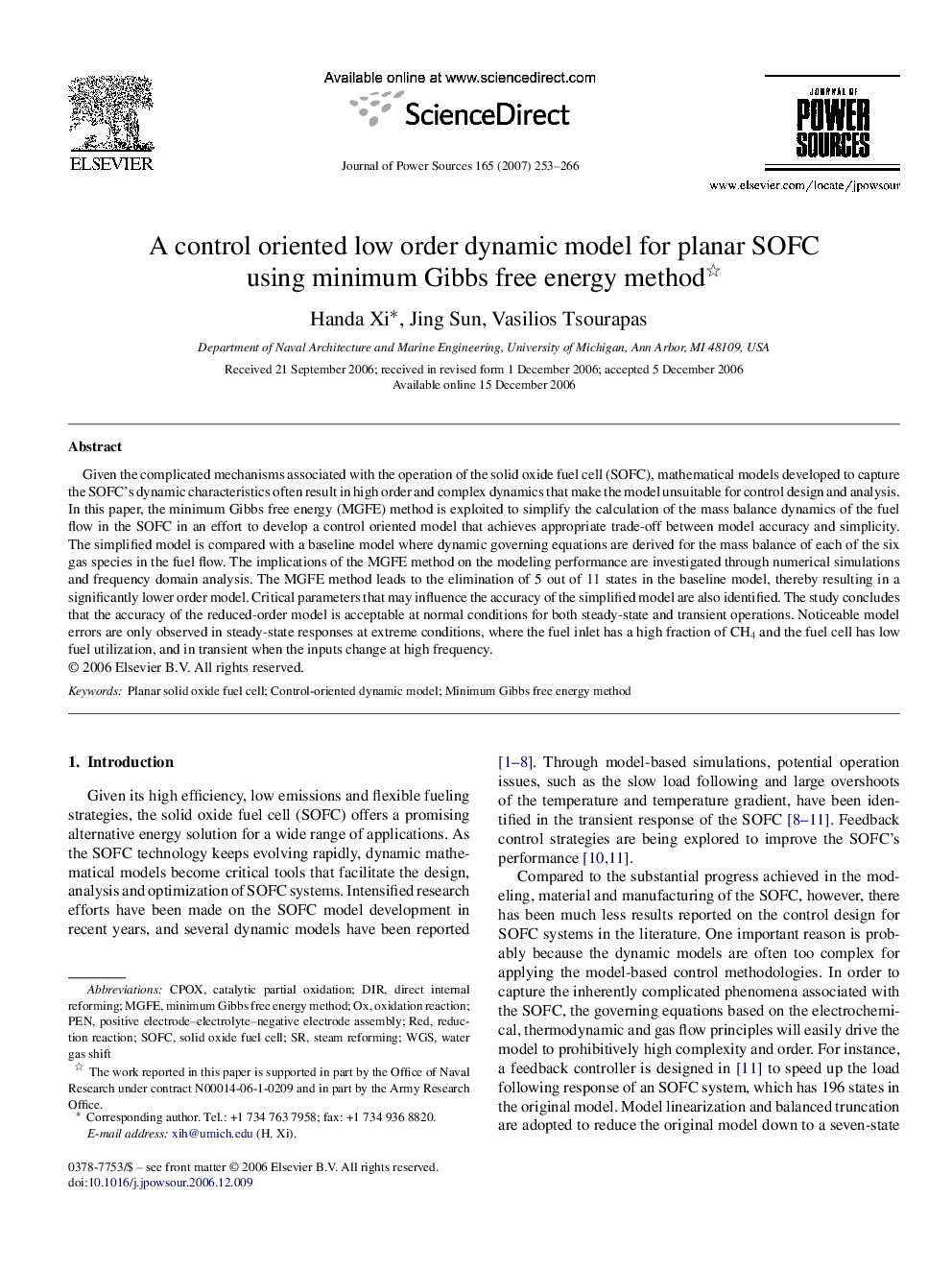| Article ID | Journal | Published Year | Pages | File Type |
|---|---|---|---|---|
| 1291944 | Journal of Power Sources | 2007 | 14 Pages |
Given the complicated mechanisms associated with the operation of the solid oxide fuel cell (SOFC), mathematical models developed to capture the SOFC’s dynamic characteristics often result in high order and complex dynamics that make the model unsuitable for control design and analysis. In this paper, the minimum Gibbs free energy (MGFE) method is exploited to simplify the calculation of the mass balance dynamics of the fuel flow in the SOFC in an effort to develop a control oriented model that achieves appropriate trade-off between model accuracy and simplicity. The simplified model is compared with a baseline model where dynamic governing equations are derived for the mass balance of each of the six gas species in the fuel flow. The implications of the MGFE method on the modeling performance are investigated through numerical simulations and frequency domain analysis. The MGFE method leads to the elimination of 5 out of 11 states in the baseline model, thereby resulting in a significantly lower order model. Critical parameters that may influence the accuracy of the simplified model are also identified. The study concludes that the accuracy of the reduced-order model is acceptable at normal conditions for both steady-state and transient operations. Noticeable model errors are only observed in steady-state responses at extreme conditions, where the fuel inlet has a high fraction of CH4 and the fuel cell has low fuel utilization, and in transient when the inputs change at high frequency.
